Are you struggling to choose between numeric or letter sizing for your product? Look no further - we've got all the information you need to make the right decision! In this article, we'll break down the pros and cons of both sizing systems and help you determine which one is the perfect fit for your product.
Numeric sizing, represented by numbers like 4, 6, or 10, is commonly used in industries such as fashion and apparel. It provides a straightforward and precise way to communicate size, making it easier for customers to find their perfect fit. On the other hand, letter sizing, such as S, M, or L, is often seen in casual clothing and offers a more generalized approach. It allows for a wider range of body types to find a size that suits them.
Understanding the strengths and weaknesses of each sizing system is essential to ensure customer satisfaction and minimize returns. So, whether your brand voice calls for numbers or letters, join us as we unravel the mystery of numeric and letter sizing and help you choose the right fit for your product.
Understanding the differences between numeric and letter sizing
When it comes to determining the size of your product, you have two main options: numeric or letter sizing. Each system has its own unique characteristics and considerations that you must take into account. Understanding the differences between the two will enable you to make an informed decision that aligns with your brand and resonates with your target audience.

Numeric sizing, represented by numbers like 4, 6, or 10, is commonly used in industries such as fashion and apparel. It provides a straightforward and precise way to communicate size, making it easier for customers to find their perfect fit. With numeric sizing, customers can easily identify their measurements and compare them against the provided size chart. This system is particularly useful for products that require a more tailored fit, such as formal wear or performance clothing.
On the other hand, letter sizing, such as S, M, or L, is often seen in casual clothing and offers a more generalized approach. It allows for a wider range of body types to find a size that suits them. Letter sizing is versatile and inclusive, making it an excellent choice for brands that cater to a diverse customer base. By using letters, you can create a more relatable and approachable shopping experience, as customers can quickly identify their size without needing to match measurements exactly.
Factors to consider when choosing numeric or letter sizing
When deciding between numeric or letter sizing, several factors should influence your choice. It's crucial to consider your target audience, the nature of your product, and your brand identity. Let's explore some of the key factors to help you make an informed decision.
1. Target Audience: Understanding your target audience is essential when choosing a sizing system. Consider their demographics, preferences, and shopping behaviors. If your target audience consists of individuals who appreciate precision and accuracy, numeric sizing might be the way to go. Alternatively, if your audience values comfort and ease, letter sizing could be a better fit.
2. Product Type: The type of product you offer plays a significant role in determining the appropriate sizing system. For example, if you sell athletic wear that requires a specific fit for optimal performance, numeric sizing might be more suitable. On the other hand, if you sell casual t-shirts or loungewear, letter sizing could provide the flexibility and simplicity your customers desire.
3. Brand Identity: Your brand's voice and identity should align with your chosen sizing system. Numeric sizing can convey a sense of precision and attention to detail, while letter sizing can evoke a more relaxed and inclusive vibe. Consider how each system resonates with your brand story and values.
By considering these factors, you can make an informed decision that will enhance your customers' shopping experience and ensure they find the perfect fit for your product.
Pros and cons of numeric sizing
Numeric sizing offers several advantages that make it a popular choice for many brands. Let's explore some of the pros and cons of using numeric sizing.

### Pros of Numeric Sizing
1. Precision: Numeric sizing provides a precise measurement that customers can easily compare to their own measurements. This accuracy can lead to a higher likelihood of finding the perfect fit, resulting in increased customer satisfaction and reduced return rates.
2. Consistency: Numeric sizing allows for consistent sizing across different products within your brand. This uniformity makes it easier for customers to shop confidently, knowing that their size will remain consistent across various items.
3. Specificity: Numeric sizing enables you to cater to customers who have more specific fit requirements. This is particularly important for products that require a tailored fit, such as formal wear or performance clothing.
### Cons of Numeric Sizing
1. Less Inclusive: Numeric sizing may not be as inclusive as letter sizing since it requires customers to match their measurements precisely. This can be challenging for individuals who fall between sizes or have unique body shapes.
2. Lack of Standardization: While numeric sizing offers consistency within your brand, it may not align with industry-wide standards. This could potentially lead to confusion or dissatisfaction if customers are used to a different sizing system.
3. Complexity: Numeric sizing can be more complex for customers to understand, especially if your size chart includes additional measurements such as inseam or waist circumference. It requires customers to take multiple measurements and compare them against the provided size chart.
Despite these drawbacks, numeric sizing remains a popular choice for brands that prioritize precision and cater to customers who require a more tailored fit.
Pros and cons of letter sizing
Letter sizing, although less precise than numeric sizing, has its own set of advantages and disadvantages. Let's explore the pros and cons of using letter sizing for your products.

### Pros of Letter Sizing
1. Inclusivity: Letter sizing allows for a wider range of body types to find their size, promoting inclusivity and making customers feel represented. It eliminates the need for customers to match their measurements exactly, making the shopping experience more accessible and less intimidating.
2. Simplicity: Letter sizing offers a simpler approach to sizing, as customers only need to identify their general size (S, M, L, etc.) rather than taking multiple measurements. This simplicity can appeal to customers who prioritize ease and convenience.
3. Flexibility: Letter sizing provides flexibility, as customers can often choose between sizes that are slightly larger or smaller than their exact measurements. This allows for individual preferences and variations in fit.
### Cons of Letter Sizing
1. Lack of Precision: Letter sizing is less precise than numeric sizing, which may result in a less accurate fit for some customers. This could potentially lead to higher return rates if customers are dissatisfied with the fit.
2. Potential Confusion: Letter sizing is not as standardized as numeric sizing, and interpretations of sizes can vary between brands. This lack of consistency may confuse customers who are accustomed to a specific letter sizing system.
3. Limited Range: Letter sizing may not be suitable for products that require a more tailored fit or have specific measurement requirements. It may not provide the level of accuracy needed for certain types of clothing, such as formal wear or performance gear.
Despite these limitations, letter sizing offers a more inclusive and approachable approach to sizing, making it a popular choice for brands that prioritize diversity and simplicity.
Examples of products that commonly use numeric sizing
Numeric sizing is prevalent in various industries, particularly in fashion and apparel. Let's explore some examples of products that commonly use numeric sizing.
1. Jeans: Denim brands often use numeric sizing to help customers find the perfect fit. Numeric sizing allows for precise measurements of waist size, inseam length, and sometimes even hip circumference.

2. Dresses: Formal dresses, such as evening gowns or bridesmaid dresses, often use numeric sizing to ensure a tailored fit. This is especially important for garments that require a specific silhouette or length.

3. Performance Clothing: Brands that specialize in athletic wear or performance clothing rely on numeric sizing to provide customers with the right fit for optimal performance. This includes sports bras, leggings, and compression gear.
Numeric sizing is particularly beneficial for products that require a more customized fit or have specific measurement requirements.
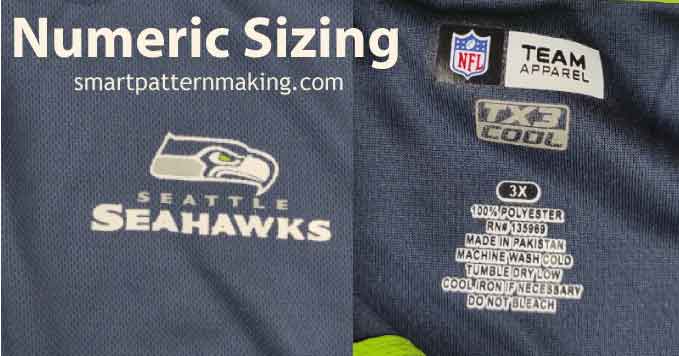
Examples of products that commonly use letter sizing
Letter sizing is commonly used in casual clothing and brands that prioritize inclusivity and simplicity. Let's explore some examples of products that commonly use letter sizing.
1. T-shirts: Many casual t-shirt brands opt for letter sizing to create a more relaxed and accessible shopping experience. This allows customers to choose between sizes without needing to match their exact measurements.

2. Loungewear: Comfortable loungewear, such as sweatpants or hoodies, often utilize letter sizing to provide a more relaxed fit. This allows customers to prioritize comfort over precision.

3. Swimwear: Swimwear brands frequently use letter sizing to accommodate a wider range of body shapes and sizes. This promotes inclusivity and makes it easier for customers to find a swimsuit that fits comfortably.
Letter sizing is particularly popular in brands that prioritize versatility, comfort, and inclusivity.

How to determine the right fit for your product
Choosing the right sizing system for your product is essential to ensure customer satisfaction and minimize returns. Here are some steps you can take to determine the right fit for your product:
1. Conduct Market Research: Start by researching your target audience and their preferences. Understand their shopping behaviors and the sizing systems they are most familiar with. This will give you insights into whether numeric or letter sizing would resonate better with your customers.
2. Consider Your Product: Evaluate the nature of your product and its fit requirements. Determine if a more precise fit or a more relaxed and inclusive fit is necessary. Consider the specific measurements needed for your product and how they align with numeric or letter sizing.
3. Test and Gather Feedback: Conduct product testing and gather feedback from a diverse group of individuals who represent your target audience. This will help you assess how well your chosen sizing system works for your product and identify any areas for improvement.
4. Continuously Monitor and Adjust: Keep a close eye on customer feedback, return rates, and general satisfaction with your sizing system. Continuously monitor and adjust your sizing approach to ensure it meets the needs and preferences of your target audience.
By following these steps, you can determine the right fit for your product and enhance your customers' shopping experience.
Tips for implementing numeric or letter sizing effectively
Once you've chosen between numeric or letter sizing, it's crucial to implement it effectively to maximize its benefits. Here are some tips to help you:
1. Provide Detailed Size Charts: Whether you choose numeric or letter sizing, provide clear and detailed size charts that customers can easily reference. Include measurements and guidelines to help customers determine their size accurately.
2. Offer Size Guides: Create size guides that explain how to measure oneself correctly and interpret the size chart. This will help customers navigate the sizing system more effectively and reduce the likelihood of incorrect sizing.
3. Offer Virtual Fitting Tools: Consider implementing virtual fitting tools, such as augmented reality or body scanning technology. These tools allow customers to visualize how the product will fit their body, increasing confidence in their purchase decision.
4. Include Fit Descriptions: Alongside the size chart, provide descriptive information about the fit of your product. This can include details on whether the item runs true to size, is more fitted or relaxed, or offers any specific design features that affect the fit.
5. Encourage Customer Reviews: Encourage customers to leave reviews and share their sizing experience. This will not only provide valuable insights for potential customers but also build trust and credibility in your sizing system.
By implementing these tips, you can ensure a seamless and positive experience for your customers, regardless of whether you choose numeric or letter sizing.
Conclusion
Choosing between numeric or letter sizing for your product is a decision that should be based on careful consideration of your target audience, product type, and brand identity. Numeric sizing offers precision and consistency, while letter sizing promotes inclusivity and simplicity. By understanding the pros and cons of each system and implementing them effectively, you can provide a positive and tailored shopping experience for your customers. Remember to continuously monitor and adjust your sizing approach to meet the changing needs and preferences of your target audience. Whether you opt for numeric or letter sizing, the goal remains the same - to help your customers find the perfect fit for your product.
For Reliable and Accurate Pattern Grading Services Drop Us A Chat Here!
Alpha Sizing For Clothing Manufacturing 101 FAQ(s)
In the apparel industry, letter sizing, also known as alpha sizing, is commonly used for clothing collection sampling and manufacturing size range. Alpha sizing uses letters such as XS, S, M, and L to represent different sizes. This lettering system is primarily universal and is often applied to knit clothing, such as T-shirts, sweatshirts, hoodies, leggings, and active tank tops/sports bras. The alpha sizing chart can cover a broader range of body sizes compared to numeric sizing. The standard grading rule for alpha sizing is a 2-inch circumference difference between sizes, although for larger clothing sizes, the grade rule may increase to 3 inches. The specific grade rule will depend on the fit preferences of the brand.
what is alpha size?
Answer: Alpha size refers to a sizing system used in clothing, particularly in athletic wear. It uses letters (such as S, M, L, XL) to indicate different sizes, rather than numerical measurements.
How does alpha sizing work?
Answer: Alpha sizing is a system used in clothing to categorize sizes using letters such as XS, S, M, L, XL, etc. Each letter corresponds to a range of measurements, allowing for a more generalized sizing system. For example, XS may represent sizes 0-2, while XL may represent sizes 16-18. It is important to note that alpha sizing can vary between brands, so it is always recommended to refer to the brand's specific size chart for accurate measurements.
The Benefits of Alpha Sizing in the Apparel Industry
Answer: Alpha sizing, which uses letters (such as S, M, L) instead of numerical sizes, offers several benefits in the apparel industry. It simplifies the sizing process for both manufacturers and consumers, reduces the need for excessive inventory, and improves the overall shopping experience by eliminating confusion and frustration. Additionally, alpha sizing allows for more inclusive sizing options, accommodating a wider range of body types and promoting body positivity.
What is the difference between alpha sizing and numeric sizing?
Answer: Alpha sizing refers to clothing sizes that are represented by letters (such as S, M, L) and are typically used for more casual or relaxed fit clothing. Numeric sizing, on the other hand, uses numbers (such as 2, 4, 6) and is often used for more tailored or fitted clothing. The main difference is in the way the sizes are represented, with alpha sizing being more general and numeric sizing providing more specific measurements.
Letter Sizing FAQ(s)
What does letter mean in sizing?
Answer: In clothing sizing, the term "letter" refers to the use of letters (such as S, M, L, XL) to indicate different sizes. These letters typically represent a range of measurements or fit, with S being small, M being medium, L being large, and XL being extra large. The specific measurements or fit associated with each letter size can vary between brands and countries, so it's important to refer to size charts or try on clothing to find the best fit for you.
Why is letter sizing important?
Answer: Letter sizing is important in design because it affects readability and legibility. Properly sized letters ensure that the text is easy to read and understand, especially from a distance. It also helps to create a visually balanced and aesthetically pleasing design.
What is small size in number?
Answer: Small size is generally converted to a number depending on the type of clothing. For example, for women's clothing, small typically converts to a size 6, and for men's clothing, small is usually equivalent to a size 34-36.
Numeric Sizing FAQ(s)
What is medium size in numbers?
Answer: Medium size typically corresponds to a size 6 or 8 in women's clothing. To convert it to a numerical measurement, you can use the following conversion chart: Small (4-6): Bust 29.5-30.5 inches, Waist 23.5-25 inches, Hips 32.5-34 inches; Medium (8-10): Bust 31.5-32.5 inches, Waist 25.5-27 inches, Hips 34.5-36 inches; and Large (12-14): Bust 34-35.5 inches, Waist 27.5-29 inches, Hips 36.5 -38 inches
What is size xl in number?
Answer: To convert size XL to a number, you would need to refer to a size chart specific to the brand or clothing item you are looking at. Different brands may have slightly different size measurements for XL, so it's best to consult the size chart provided by the brand or retailer.
what is size large in numbers?
Answer: The specific measurements for size large can vary depending on the brand and clothing item. However, as a general guideline, size large typically corresponds to a chest measurement of around 40-42 inches for men and a bust measurement of around 38-40 inches for women.
What is numeric sizing?
Answer: Numeric sizing refers to the use of numbers to indicate the size of clothing, shoes, or other items. It is a system where specific numbers are assigned to different sizes, allowing consumers to easily identify the size that fits them best. Numeric sizing is commonly used in clothing and shoe industries, where sizes range from small numbers (e.g., 0 or 2) to larger numbers (e.g., 16 or 18).
What numerical size is XL?
Answer: In most clothing brands, XL typically corresponds to a numerical size of 16-18 for women and 42-44 for men. However, it's important to note that sizing can vary between brands, so it's always best to refer to the specific brand's size chart for accurate measurements.
What is numeric size in women's sizes?
Answer: Numeric sizing in women's clothing refers to the use of numbers to indicate the size of a garment. Each number corresponds to a specific measurement, such as bust, waist, and hips. The exact measurements can vary between brands, so it's important to refer to the brand's size chart for accurate sizing information.
Shirts Numeric Sizing FAQ(s)
What are the numeric sizes of shirts?
Answer: Numeric sizing for shirts typically ranges from XS (extra small) to XXL (extra extra large). However, the specific numeric sizes can vary between brands and countries. It is important to refer to the size chart provided by the brand or retailer to determine the exact numeric size that corresponds to your measurements.
How do I know my tee shirt size?
Answer: To determine your t-shirt size, you can measure your chest circumference with a measuring tape and compare it to the size chart provided by the brand or retailer. It's also helpful to consider your body shape and personal preference for a loose or fitted fit.
What does 16 34 35 mean?
Answer: The numbers 16, 34, 35 typically refer to shirt sizing. The first number (16) represents the neck size in inches, while the second number (34) represents the sleeve length in inches. The third number (35) represents the overall length of the shirt in inches.
Pants Numeric Sizing FAQ(s)
What is the numeric size of pants?
Answer: Numeric sizing for pants refers to the measurement of the waist size in inches. For example, a size 30 waist would indicate a waist measurement of 30 inches. It is important to note that different brands may have slight variations in their sizing, so it is always recommended to try on pants before purchasing to ensure the best fit.
What size is 32 in women’s jeans?
Answer: In women's jeans, a size 32 typically corresponds to a size 12 or 14, depending on the brand and fit. It is always recommended to refer to the specific brand's size chart for the most accurate sizing information.
What is a size 30 in women’s jeans?
Answer: In women's jeans, a size 30 typically corresponds to a waist measurement of around 30 inches. However, it's important to note that sizing can vary between brands, so it's always best to refer to the specific brand's size chart for the most accurate fit.
Is a 32-inch waist a size 14?
Answer: No, a 32-inch waist is typically considered a size 12 in women's clothing. Sizing can vary between brands and countries, so it's always best to refer to the specific size chart provided by the brand you are interested in.
Is a size 28 a size 6?
Answer: No, a size 28 is not equivalent to a size
What is waist size 32 equivalent to?
Answer: In numeric sizing, waist size 32 typically corresponds to a medium or size 8 in women's clothing and a size 32 in men's clothing. However, it's important to note that sizing can vary between brands, so it's always best to refer to the specific brand's size chart for the most accurate fit.
What does pant size 32x32 mean?
Answer: Pant size 32x32 refers to the waist size and inseam length of the pants. The number 32 represents the waist size in inches, while the second number 32 represents the inseam length in inches. So, in this case, the pants have a waist size of 32 inches and an inseam length of 32 inches.
What does 36x32 mean in pants?
Answer: In men's pants sizing, the numbers 36x32 refer to the waist and inseam measurements, respectively. The number 36 represents the waist size in inches, while the number 32 represents the inseam length in inches.
What does 36x34 pants mean?
Answer: 36x34 pants refers to the size of men's pants. The number 36 represents the waist measurement in inches, while the number 34 represents the inseam measurement in inches.
Bikinis Numeric Sizing FAQ(S)
How do I know my bikini size?
Answer: To determine your bikini size, you will need to measure your bust, waist, and hips. Use a measuring tape and refer to a size chart provided by the brand or retailer you are purchasing from. It's important to note that sizes may vary between brands, so always check the specific measurements for each bikini style.
What is a size 6 in bikini?
Answer: A size 6 in bikinis typically corresponds to a small or medium size, depending on the brand and style. It is always recommended to refer to the specific size chart provided by the retailer to ensure the best fit.
What size bikini is a 32C?
Answer: There is no specific size for a bikini based on bra size. Bikini sizes typically range from XS to XL or are based on numerical sizes (e.g. 2, 4, 6, etc.). It is recommended to refer to the size chart provided by the brand or retailer to determine the best size for a bikini.
Dresses Numeric Sizing FAQ(S)
What size waist is a size 12?
Answer: In numeric sizing, a size 12 typically corresponds to a waist measurement of around 30-31 inches. However, it's important to note that sizing can vary between brands, so it's always best to refer to the specific brand's size chart for accurate measurements.
What size is 42 in dresses?
Answer: In most standard sizing charts, a size 42 in dresses typically corresponds to a size XL or 16 in women's clothing. However, it's important to note that sizing can vary between brands and countries, so it's always best to refer to the specific brand's size chart for accurate measurements.
What is numeric dress size?
Answer: Numeric dress sizes refer to the numerical measurement of a person's body size, typically based on their bust, waist, and hip measurements. Each brand may have slightly different sizing charts, so it's important to refer to the specific brand's size guide when shopping for dresses.
How do I know my dress size number?
Answer: To determine your dress size number, you can measure your bust, waist, and hips using a measuring tape. Once you have these measurements, you can refer to a size chart provided by the brand or retailer to find your corresponding dress size. It's important to note that dress sizes can vary between brands, so it's always a good idea to check the specific brand's size chart for the most accurate fit.
How are women's dress sizes calculated?
Answer: Women's dress sizes are typically calculated based on measurements of the bust, waist, and hips. These measurements are used to determine the size that will provide the best fit for a person's body shape. However, it's important to note that sizing can vary between brands and designers, so it's always recommended to refer to the specific brand's size chart for the most accurate fit.
What numerical size is a medium dress?
Answer: Women's dress sizes are typically calculated based on measurements of the bust, waist, and hips. These measurements are used to determine the size that will provide the best fit for a person's body shape. However, it's important to note that sizing can vary between brands and designers, so it's always recommended to refer to the specific brand's size chart for the most accurate fit.
Jackets Numeric Sizing FAQ(s)
How do I know my men's jacket size?
Answer: To determine your men's jacket size, you will need to measure your chest, waist, and sleeve length. Use a measuring tape to measure around the fullest part of your chest, around your natural waistline, and from the center of your back to your wrist. Compare your measurements to a size chart to find your correct jacket size.
How are mens jackets sized?
Answer: Men's jackets are typically sized based on chest measurements. To find the right size, measure around the fullest part of your chest and match it to the corresponding size on the sizing chart provided by the brand or retailer. It's also important to consider the fit and style of the jacket, as different brands may have slightly different sizing standards.
What size is a 42R in men's coat?
Answer: A 42R in men's coat refers to a size 42 regular. This means that the jacket has a chest measurement of approximately 42 inches and is designed for someone of average height. However, it is always recommended to refer to the specific brand's size chart for accurate measurements and fit.
What size is 42 in US mens jacket?
Answer: In the US, a size 42 in men's jackets is typically equivalent to a size XL. However, it is always recommended to refer to the specific brand's size chart for accurate measurements.
---------------
Ready to start pattern grading and resizing all your fashion and non-fashion products? if so, Drop us a chat NOW and we’ll get you started!
Discover all of our Pattern Making, Digitizing, Resizing and Printing services all available to you and let our expert team size up or size down all personal or fashion brand products today!
Loved reading this article and founded valuable? If so, Show us some love and buy us a coffee! ☕ :)
Developing tools and creating valuable content takes a lot of hours of work and days of research so that you can have them at your disposal. Also, keeping the content you read (Ads FREE) and operating this website cost a lot of money. So please, consider supporting us, so that we might continue to provide you with more valuable tools, fresh content, and to continue offering you with the best services that you deserve!

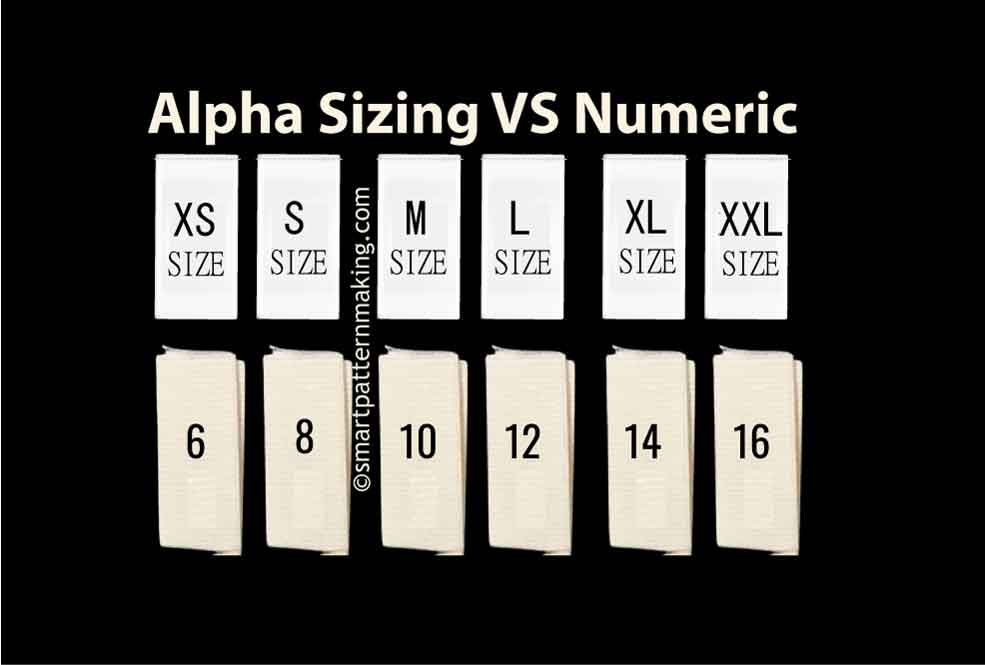


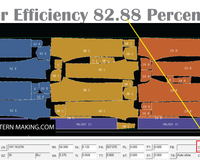

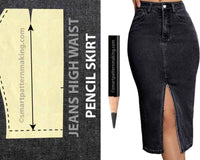
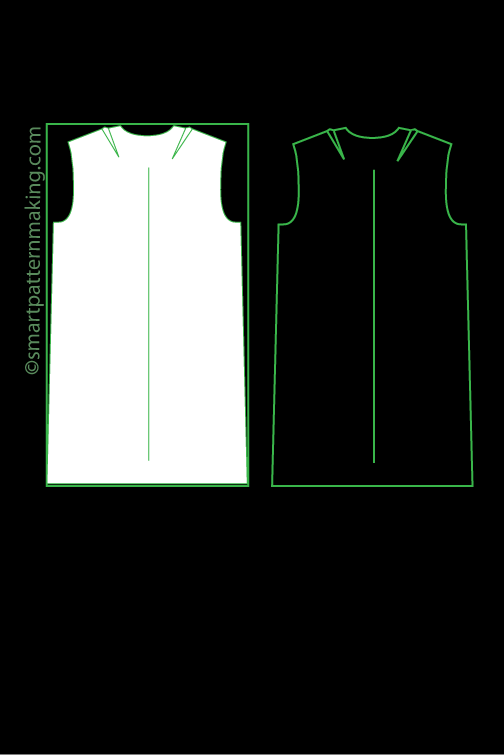
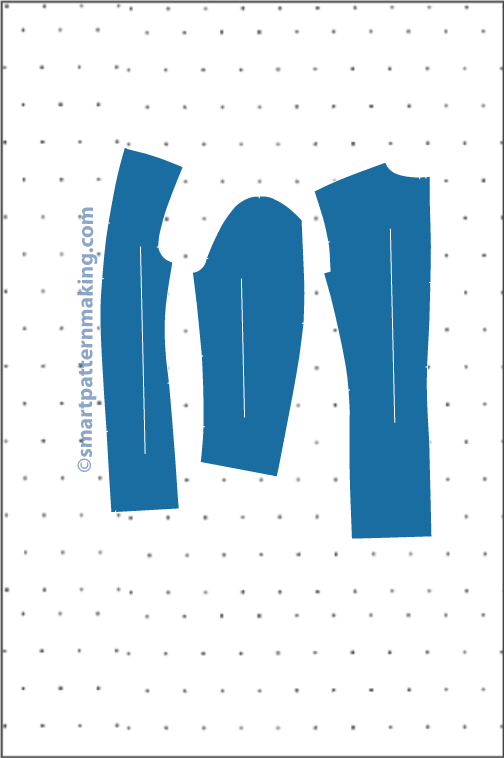
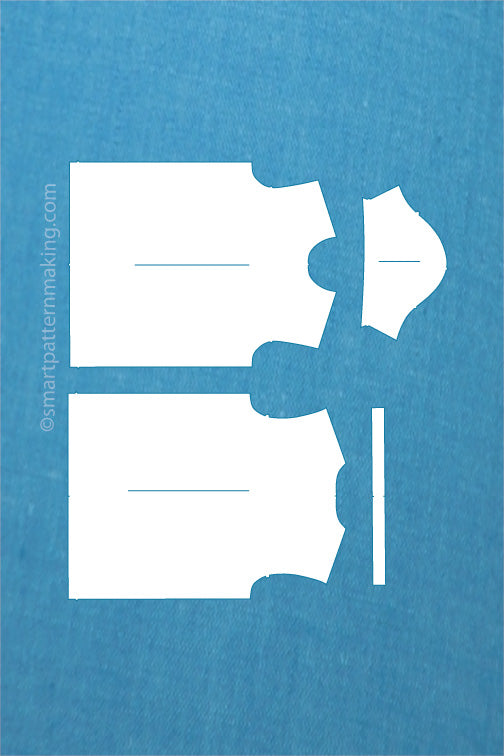
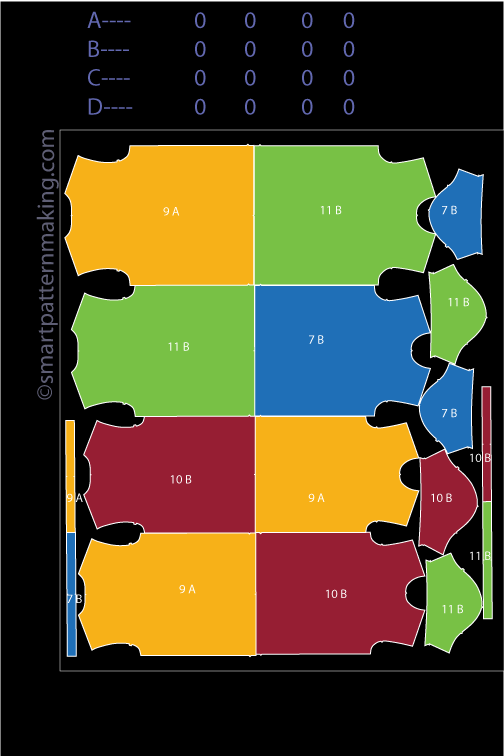
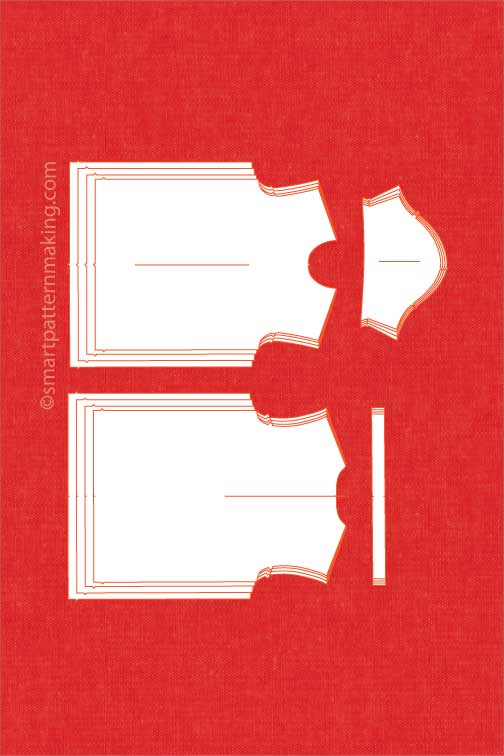

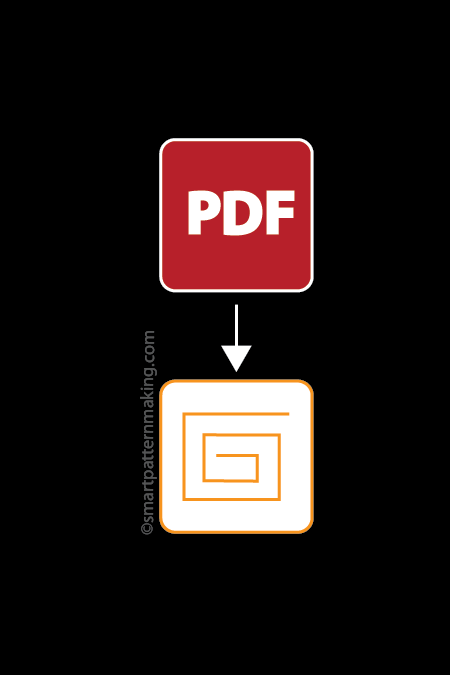
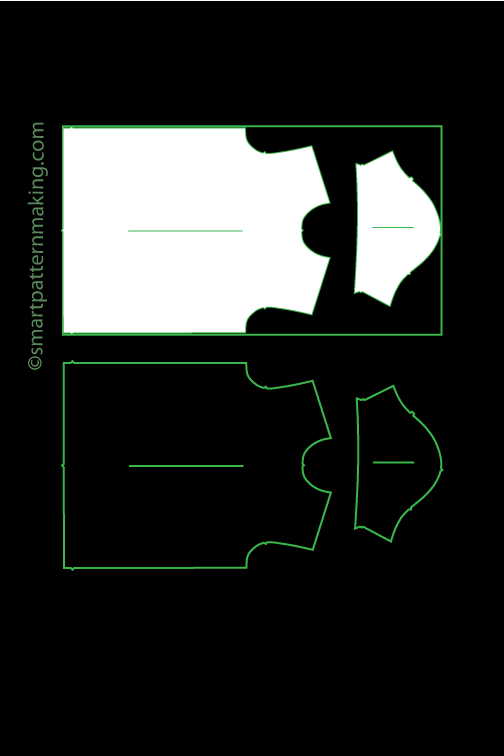
1 comment
Alejandro Esparza
Hi Everyone Welcome! Letter Sizing or Numeric? What are some of the problems that you have encountered along your journey when trying to label your fashion products? COMMENT BELOW Cheers! ✌️